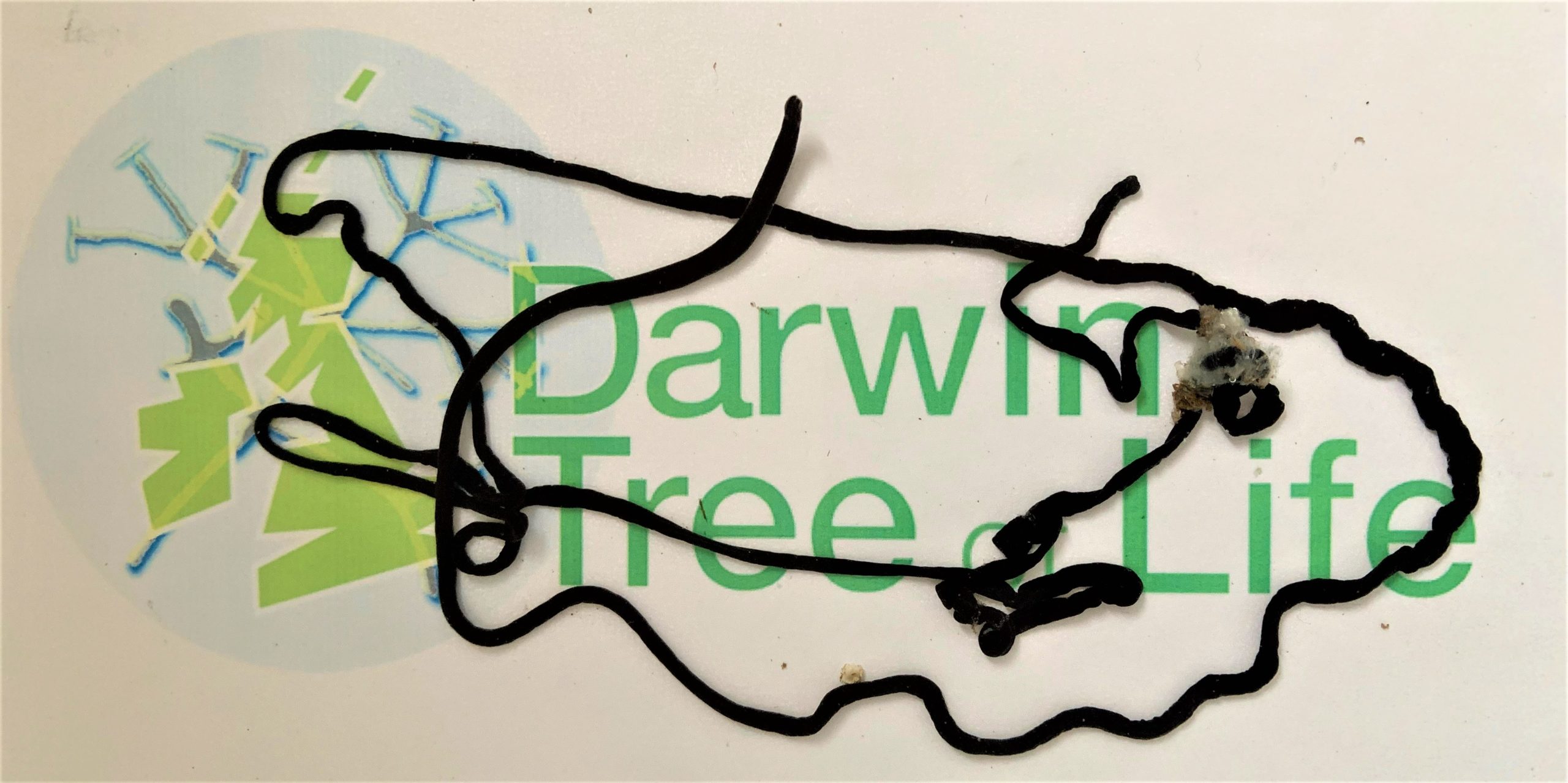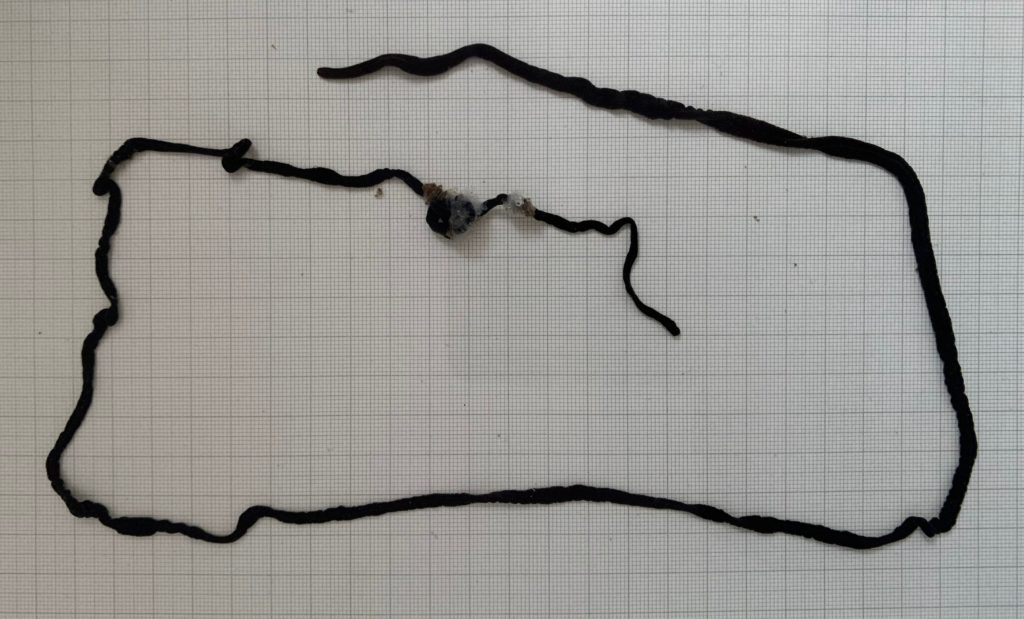
Lineus longissimus: Marine medicines from the ribbon worm
The world’s longest animal is a type of nemertean, or ribbon worm, known as Lineus longissimus – one specimen was measured as 55 metres. This record is contested though, as Lineus only reaches extreme lengths when fully stretched out – the animals are remarkably elastic. Still, it is impressive, meaning that one animal is just longer than an Olympic swimming pool. Worldwide, there are 1,300 species of nemerteans. Some are predators at the top of the food chain, others are tiny and feed on microbes, and a few are parasites. Many reside in the rocky coastal shores around Britain and Ireland. Their biology and their roles in marine ecosystems are not well studied.
Now, the genome of Lineus longissimus has been sequenced for the first time, as part of the Darwin Tree of Life project to sequence the genomes of 70,000 species across Britain and Ireland.
As well as characterising the worms themselves and understanding the place of nemerteans in the tree of life, researchers hope that the genomes of these worms will help uncover new chemical compounds for use in agriculture, biotechnology and medicine.
“They’re not cute or charismatic. They have toxic mucus. But I like nemerteans because no one is rooting for them – and we know so little about them,” said Patrick Adkins from the Marine Biological Association (MBA).

Toxic mucus
Lineus longissimus is not only long, it is also very (very) slimy. The toxic mucus of nemertean worms was first described in 1555 by Swedish archbishop and naturalist, Olaus Magnus. Despite his work detailing giants, unicorns, and sea monsters, researchers think he was describing Lineus longissimus when he wrote, “The worm is entirely harmless, unless touched by a human hand. In that case, the fingers will swell when the animal comes into contact with the skin of the hand”.
In the 1960s researchers started to define toxins in the mucus of a range of nemertean species. Many are neurotoxins that affect a wide range of animals and may function to defend the worms from predators.
It was not until 2018 that toxins from Lineus longissimus mucus were extracted and fully described, when Swedish researchers characterised α-nemertide toxins. These paralyse and kill green crabs by affecting sodium channels in the crab nervous system. Because the toxins also kill cockroaches, but have limited effects on mammalian cells, they are potential new insecticides.

The toxins characterised in the 2018 study came from just 17 species of nemertean. Thousands of other chemicals have been identified from a relatively small number of marine plants, animals, and microbes. There are likely to be many more, waiting to be discovered. Several compounds have been successfully developed by the pharmaceutical industry – drugs to treat leukaemia and HIV were based on findings in sea sponges.
And looking beyond the oceans, almost a third of all small-molecule drugs approved by the U.S. Food and Drug Administration between 1981 and 2014 were either natural products or compounds derived from natural products. With an estimated 90 per cent of eukaryotic species on Earth yet to be discovered , there is huge potential to uncover new anti-fungal, anti-bacterial or anti-viral compounds.
Working with worms
The specimen of Lineus longissimus was collected by Sanger Institute staff on the island of Cumbrae in Scotland. It was found tangled in the holdfast of seaweeds in the intertidal zone at the Millport centre of the Field Studies Council.
Described as a ‘relative tiddler’ at a resting length of 20 cm, the specimen did reach about a metre when questing around its tank, secreting mucus all the while. It was formally identified then snap frozen in liquid nitrogen to preserve it, and shipped to the Tree of Life laboratory at the Sanger Institute. Other marine species in the Darwin Tree of Life project will come from a range of partner organisations, including the Marine Biological Association, who have a major role in sampling aquatic species – from phytoplankton to fish.

Caroline Howard, lead at the Tree of Life lab at the Sanger Institute commented on the difficulties of working with Lineus longissimus. “No-one had attempted a nemertean genome before. Getting DNA out of a worm that makes so much slime was a challenge, but we were able to use techniques we had been using on snails to do a good job. Now we’ve done one nemertean species, we can build a system to do the many others.”
The genome was deciphered using the Sanger Institute’s new fleet of long-read sequencers. Scientists and bioinformaticians analysed the data to determine the genome sequence of Lineus longissimus. The sequencing data have been released openly for anyone to use. Importantly the resulting genome has been reconstructed as whole chromosomes, and is effectively complete. This means that researchers studying the toxins – and the other amazing biology of this active predator – can be sure that they have all the information they need for their work.
“Collecting species for the Darwin Tree of Life project is helping us understand the biodiversity on our shores and in our waters. It’s a huge collaborative effort, including researchers and naturalists with expertise in a range of areas,” said Patrick Adkins, from the Marine Biological Association (MBA).
Mark Blaxter, Head of the Tree of Life Programme at the Sanger Institute, said: “The genome sequences of animals like Lineus longissimus will aid a whole new generation of research – including the discovery of new active molecules for medicine and other applications. There are many groups of creatures, like nemerteans, where we know very little beyond the fact that they exist, and the Tree of Life genomics programme aims to use genomes to understand each and every one.”
This article was written by Alison Cranage and originally posted on the Wellcome Sanger Institute Blog.
